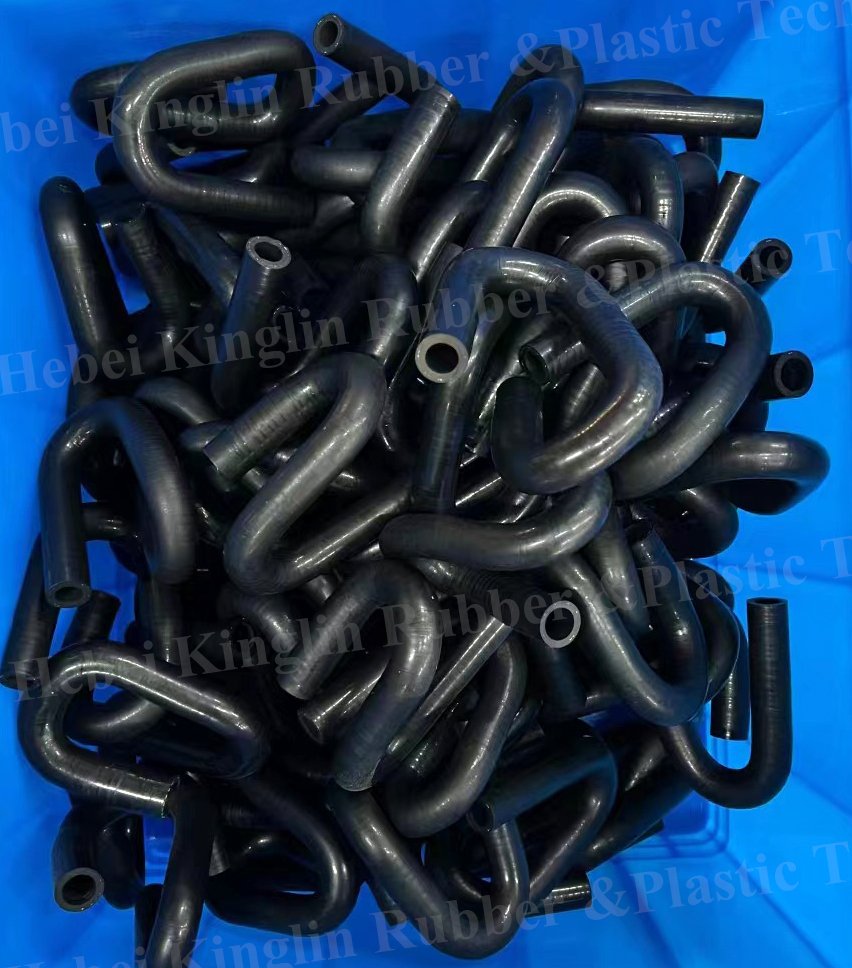EPDM rubber (EPDM rubber hose) is a kind of synthetic rubber. It is very durable and flexible, so it has a wide range of applications, including in vehicles (for window and door sealing and cooling system hoses), cold rooms, decks and playgrounds, as well as in many other areas. In short, pure rubber becomes brittle with the change of temperature. Among them, synthetic rubber (EPDM) remains elastic and can withstand decades of temperature changes. As professional silicone hoses manufacturer, we supply high quality silicone radiator hose and vacuum silicone hose for our customers. Certainly, we also provide OEM and ODM according to users’ demand.
The application of EPDM in roof is what we will explore in this characteristic. Due to its unique combination of material properties, this special material is very suitable for roof systems. EPDM is a copolymer with elastic properties, which means that it is a polymer with both viscosity and elasticity. If stretched, it reverts to its original shape. Its two main components (ethylene and propylene) come from oil and natural gas. In this article and our Why Use EPDM? To understand what EPDM is, we first have two types of rubber: natural rubber and synthetic rubber.
Synthetic Rubber And Natural Rubber
Synthetic rubbers as artificial production
As defination of Synthetic rubber, it is “any elastomer manufactured artificially”. In other words, the rubber is any kind of viscous (thick) and elastic (elastic) synthetic polymer. Meanwhile, It is superior to natural rubber in two main aspects, namely thermal stability and oil resistance and related compounds.
In 1839, Charles Goodyear discovered the rubber vulcanization process that set the groundwork for today’s natural rubber processing methods. As the story goes, in a moment of absent mindedness, Goodyear dropped a chunk of natural rubber on a hot stove. The heat caused the rubber to harden and stabilize—or vulcanize—which inspired Goodyear to experiment with a more controlled process for achieving the same outcome. Goodyear’s discovery eventually led to a massive spike in demand for natural rubber, which continues to this day. In fact, global demand for rubber has long since surpassed the world’s production capacity for natural rubber, and many rubber products on the market are made with synthetic rubber instead.
Natural rubber let me know
Through plants we manufact natural rubbers and classification of it is as a kind of macromolecular compound. The macro-molecule is composed of many similar small molecules. Some polymers exist naturally, while others are produced in laboratories and factories. Actually, Polymers are macromolecular compounds composed of many similar small molecules. Some polymers exist naturally, while others are produced in laboratories and factories. It is one of the most important polymers in human society. Additionally, natural rubber is a necessary raw material for the production of more than 40,000 products. Used for medical equipment, surgical gloves, aircraft and automobile tires, pacifiers, clothes, toys, etc.
We have to obtain natural rubber from latexA A white emulsion, which contains protein, starch, alkaloids, etc., and is produced by many plants. In some plants, it also contains rubber., Milky white liquid that exists in latex containers (pipes) or rubber producing plant cells. About 20000 plants produce latex, but only 2500 plants contain rubber in latex. The biological function of rubber to plants is not completely clear. However, studies have shown that rubber can help plants heal after damage, cover wounds and stop bleeding. This prevents harmful bacteria and viruses from entering the plant.
About EPDM, How Much You Know
EPDM stands for ethylene propylene diene monomer, which is a bit raw, so it is usually referred to as EPDM or EPDM rubber (Refer to EPDM rubber hose). In additional, EPDM gets its name from the chemical substances (monomers) mixed together in different proportions. These are ethylene, propylene and diene. The ethylene content is usually between 45% and 75%. Although diene monomer only constitutes a small part of EPDM, it provides cross-linking and gives incredible elasticity, flexibility and durability. The excellent material performance of EPDM comes from this molecular sieve structure, which makes it incomparable in elasticity and aging resistance.
Application for automotive
The automobile industry is the industry that uses the most EPDM rubber hose. Its water resistance and all-weather resistance make it an ideal material for sealing vehicle seams. This includes door seals, window seals, luggage compartment seals, and hood seals. Due to its durability and friction resistance, EPDM is also used in the wiper blade of the windshield wiper. So, there are many automotive hoses products through EPDM materials. Such as high quality silicone radiator hose, silicone elbow hose or 2.5 inch silicone hose, etc.
Use of EPDM for roofing
Roofing is one of the main application fields of EPDM. It is popular because it can resist ultraviolet radiation, hail, strong wind and other extreme conditions. Especially, EPDM rubber roof is more common in northern climate regions than in southern climate regions because it is cooler in northern regions. Its heat absorption and insulation properties help keep the room warm and help melt the snow on the roof. One disadvantage of EPDM in roofs is that it shrinks over time, leading to leaks and expensive repairs. However, if installed correctly and the climate is suitable, the EPDM roof can be used for 40 years.




